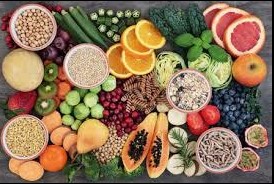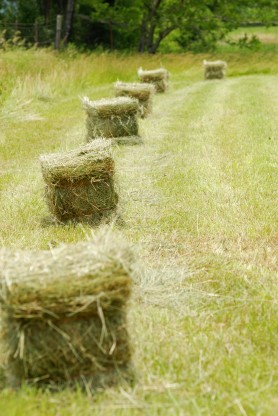The composition of animal feed plays a pivotal role in the health, growth, and productivity of livestock. Essential to this dietary formulation are two primary components: roughage and concentrate. Each offers distinct nutritional benefits and serves a specific purpose within an animal’s diet, influencing everything from digestive health to energy levels. The optimal balance between these feed types is crucial for sustaining animal well-being and achieving production goals.
Roughage, primarily consisting of fibrous materials like hay, straw, and silage, provides essential nutrients and aids in the proper functioning of the digestive system. Concentrates, on the other hand, are energy-dense feeds such as grains and oilseeds that support growth and high productivity levels in animals. Understanding the difference between roughage and concentrate is fundamental to formulating a balanced diet that meets the specific nutritional needs of various livestock species.
In the realm of animal nutrition, roughage and concentrate fulfill complementary roles. Roughage is indispensable for its fiber content, promoting healthy digestion and rumination, particularly in ruminant animals. Concentrates, with their higher energy and protein content, cater to the elevated nutritional demands of lactating, growing, or high-performing animals. The strategic integration of these feed types into livestock diets not only optimizes health and productivity but also addresses the economic aspects of animal farming by balancing cost with nutritional value.

Roughage Basics
Definition and Types
Roughage, also known as fiber or bulk, plays a critical role in the diet of livestock. It includes plant-based foods that are rich in fiber but low in digestible energy. Common examples of roughage are hay, straw, silage, and pasture grasses. These types are fundamental in promoting digestive health and providing essential nutrients to animals. Hay, often made from alfalfa, clover, or grass, is dried and stored for use throughout the year. Straw, a by-product of cereal grain production, serves as both nutrition and bedding. Silage, preserved pasture grass or corn, is fermented to retain its nutritional value, making it a valuable feed during less productive months. Pasture grasses, consumed directly by grazing animals, are a natural and vital source of roughage in their diet.
Nutritional Content
Roughage is not just filler; it’s packed with nutritional benefits. The fiber content in roughage is crucial for stimulating digestive activity and maintaining a healthy gut. Besides fiber, roughage provides vitamins and minerals essential for livestock health, such as Vitamin A in green pasture and calcium in alfalfa. These nutrients support various bodily functions, from vision to bone health, making roughage an indispensable part of animal diets.
Benefits for Livestock
Roughage offers multiple benefits for livestock, including:
- Digestive Health: High fiber content helps maintain gut motility, preventing issues like bloating or constipation.
- Nutrient Absorption: It aids in the slow release of nutrients, ensuring better absorption.
- Overall Well-being: Roughage consumption is linked to improved animal health and productivity, contributing to a balanced diet.
Concentrate Essentials
Definition and Varieties
Concentrates are feeds that provide high energy content with lower fiber levels compared to roughage. They include grains (such as corn, wheat, oats), oilseeds (like soybean meal), and by-products from the processing of food for humans. These feeds are energy-dense, making them ideal for supporting rapid growth, milk production, and high energy demands of livestock.
Nutritional Profile
The nutritional profile of concentrates is characterized by their high energy and protein content, essential for the growth and productivity of animals. Unlike roughage, concentrates have a lower fiber content, which allows for more efficient digestion and utilization of nutrients. This high-energy feed is particularly beneficial during stages of fast growth or high production.
Advantages for Animals
Concentrates offer several advantages for animals, such as:
- Promoting Growth: Essential for young or growing animals requiring more energy.
- Enhancing Milk Production: Crucial for dairy animals to meet their increased nutritional demands.
- Meeting High Energy Needs: Ideal for animals in intensive production systems or those with high energy requirements.
Comparative Analysis
Fiber Content
The fiber content significantly differs between roughage and concentrate. Roughage is rich in fiber, which is beneficial for digestive health but provides less digestible energy. Concentrates, on the other hand, offer more energy with less fiber, suitable for animals needing higher energy intake for growth or production.
Energy Levels
Roughage and concentrate differ greatly in energy levels. Roughage provides lower energy content but is essential for digestive health and nutrient absorption. Concentrates, with their high-energy density, are vital for animals requiring extra energy for growth, lactation, or other productive activities.
Protein Quality
The protein quality in roughage and concentrate can vary. Roughage typically offers moderate to high protein content, depending on the type (e.g., legume-based roughages like alfalfa are higher in protein). Concentrates often provide higher levels of protein, essential for muscle development and growth. Balancing these sources is crucial to ensure livestock receive all necessary amino acids for optimal health.
Cost Implications
Cost implications of using roughage versus concentrate in diets are notable. Roughage, while often less expensive and readily available, may require larger quantities to meet nutritional needs. Concentrates, although more costly per unit, provide a dense source of nutrients, potentially leading to lower overall feed costs when used effectively. Balancing the two types of feed based on nutritional needs and economic factors is key to efficient livestock management.

Feeding Strategies
Balancing Roughage and Concentrate
Finding the right balance between roughage and concentrate is crucial for maintaining the health and productivity of various types of livestock. This balance is not one-size-fits-all; it varies significantly across different animals and their specific needs. Roughage, rich in fiber, is essential for the digestive health of animals, while concentrate provides a denser energy source necessary for growth, lactation, and activity levels. Achieving the optimal mix ensures animals receive all necessary nutrients without the excess that can lead to health issues or wasted resources.
Considerations for Different Livestock
Cattle
For cattle, especially those raised for beef or dairy production, the roughage-to-concentrate ratio is a pivotal aspect of their diet. Dairy cattle require a higher concentrate mix to support milk production, while beef cattle diets may lean more towards roughage to promote lean muscle growth.
Sheep and Goats
Sheep and goats, being ruminants like cattle, also thrive on a diet that includes both roughage and concentrate. However, their smaller size and different grazing habits mean their diets often need adjustments to prevent bloating and ensure proper nutrient intake.
Horses
Horses, as non-ruminant herbivores, require a diet high in roughage to maintain their digestive health and prevent colic. Concentrates are usually added for horses with higher energy demands, such as racehorses or pregnant mares.
Adjustments for Life Stages and Production Phases
The balance of roughage and concentrate in an animal’s diet must adapt to their life stage and production phase. Younger animals, growing rapidly, may need more concentrates to meet energy and protein requirements. Conversely, adults in maintenance or non-production phases can thrive on diets heavier in roughage. During lactation or late pregnancy, the need for concentrates increases to support the additional nutritional demands.
Challenges and Solutions
Managing Dietary Costs
Optimizing feed costs while ensuring nutritional quality requires strategic planning. Here are a few strategies:
- Bulk Purchases: Buying feed in bulk can reduce costs significantly.
- Local Sourcing: Utilizing locally available roughage and by-products can lower feed costs.
- Feed Analysis: Regular analysis helps adjust the diet to avoid nutrient excesses or deficiencies, ensuring cost-effective feeding.
Ensuring Nutritional Adequacy
Ensuring that diets meet all nutritional requirements is paramount for animal health and productivity. This can be achieved through:
- Balanced Formulations: Using scientifically formulated diets that cater to the specific needs of the livestock.
- Supplementation: Adding vitamins, minerals, or other supplements to address any dietary gaps.
- Regular Health Checks: Monitoring animal health can provide early signs of nutritional deficiencies or excesses.
Addressing Health Issues
An improper balance of roughage and concentrate can lead to health problems such as digestive upset, obesity, or nutrient deficiencies. To mitigate these issues:
- Monitor Feed Intake: Regular monitoring helps adjust diets before major issues arise.
- Professional Advice: Consulting with a veterinarian or animal nutritionist can provide guidance tailored to specific animals or herds.
- Adjust Diets Gradually: Any changes to the diet should be made gradually to allow the animals’ digestive systems to adjust.
Frequently Asked Questions
What is roughage in animal feed?
Roughage, an integral component of animal feed, comprises fibrous plant materials such as hay, grasses, and silage. It is crucial for stimulating proper digestion and rumination, especially in ruminants. By providing essential nutrients and aiding in the slow release of energy, roughage helps maintain animal health and well-being.
How do concentrates benefit livestock?
Concentrates, including grains, oilseeds, and by-products from food processing, are high in energy and protein but low in fiber. They play a critical role in meeting the nutritional needs of rapidly growing, lactating, or working animals by supplying the dense energy and essential nutrients required for these demanding physiological states.
Why is the balance between roughage and concentrate important?
Balancing roughage and concentrate in animal diets is vital for meeting the different nutritional needs of livestock while promoting optimal health and productivity. This balance helps prevent digestive issues, supports efficient growth and lactation, and ensures that the diet is economically viable for farmers.
Can improper feeding lead to health issues in animals?
Yes, improper feeding practices, including imbalances in roughage and concentrate, can lead to significant health issues in animals. For instance, too much concentrate can cause digestive upset and metabolic disorders, while insufficient roughage may lead to poor nutrient absorption and digestive problems. A well-balanced diet is essential for preventing these issues.
Conclusion
The distinction between roughage and concentrate is more than just a matter of feed type; it’s about understanding and meeting the complex nutritional needs of livestock. A diet that thoughtfully incorporates both components ensures animals not only survive but thrive, contributing to the overarching goals of animal health, productivity, and farm sustainability. The knowledge of when and how to use these feed types allows for the optimization of diets that promote the well-being of the animals and the efficiency of the farming operation.
Navigating the balance between roughage and concentrate requires a nuanced understanding of animal nutrition, an appreciation for the unique needs of different livestock species, and a commitment to sustainable farming practices. By prioritizing this balance, farmers and animal caretakers can support the health and productivity of their livestock, ensuring a productive and profitable operation that stands the test of time.

